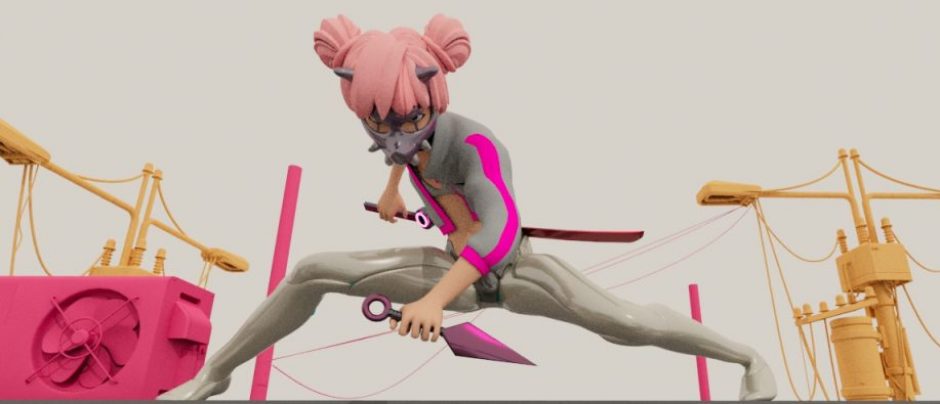In term2, I will face a stronger challenge. In addition to Maya, we have to learn different 3D software. This week, I will enter Houdini’s study week.
Houdini is a comprehensive 3D software produced by sideFX. It is different from other popular 3D software based on hierarchical dependencies. As a software-based entirely on node creation, Houdini is known for its powerful procedural modelling and solving capabilities. . It has been widely used in movie special effects and high-end advertising production for a long time.
With the popularity of dynamic design in the world in recent years, Houdini has gradually replaced other 3D software and has become the main productivity output tool for studios and designers, allowing the original complex or inefficient effects to be achieved in other software. Easier to achieve, or to achieve some new visual ideas. At the same time, Houdini’s powerful programmatic modelling capabilities and data batch processing capabilities are also widely used in the game industry. Become an important part of the production process of the game industry. Even if you don’t plan to use Houdini as your main tool, many templates contained in it can still help improve creative efficiency.





Houdini provides many different operating environments to achieve different functions. For example, the obj environment we are currently in is specifically used to manage 3D scenes for modelling and other operations. Mat and shop (not commonly used) are used to make materials, out is used to create ROP nodes, which are responsible for all output behaviours: including but not limited to setting rendering parameters, rendering pictures, baking textures, buffering and clearing, outputting scene objects to other formats, etc. Wait. In short, the operations that need to be exported to external software are all responsible for this environment.

In procedural modeling, most of the time the nodes we create are distributed vertically, and the parameters are also arranged vertically. Such a layout can obtain more effective information at the same time and improve work efficiency.
SOPs = Surface OPerators or geometry nodes that are inside an object folder. These are used to construct and modify geometry. Any kind of geometry from polygons to volumes.
DOPs = Dynamic OPerators or simulation/solver nodes that are used to construct simulations. Simulations read in geometry from SOPs and passes this data in to the DOP solvers.
SHOP = SHading Operators are materials that represent a shader to apply to geometry. Some are hard coded with vex and others are folders that you can dive in to and modify the VOPs inside.
VOPs = Vector OPerators inside VOP network nodes are used for everything from building shaders to modifying geometry, volumes, pixels, and more.
VEX = Vector Expression Language. The code language used to write shaders. VOPs are wrappers around VEX code snippets.
CVEX = Context agnostic Vector Expression Language. This has replaced all the VEX specific contexts throughout Houdini. It is a generalized language that uses the same environment and functions anywhere inside Houdini.
COPs = Composite OPerators in composite type folders. Used in image compositing operations.
ROPs = Render OPerators in side ROP Output directories which are used to create render output dependency graphs for automating output of any type of data and for triggering external processes like rendering. Commonly used to generate sequences of geometry, simulation data and trigger Render tasks that generates sequences of images to disk.
CHOPs = CHannel OPerators used to create and modify any type of raw channel data from motion to audio and everything in between. Most users safely ignore the CHOP context, and so can you, for now. Put it on the “get to it later” list when learning Houdini. But definitely keep it on the list
After getting familiar with some basic operations and settings of Houdini, I will create a cabin next.
This is a very simple example, I will be able to find some issues and familiar with some operations.
First of all, I need to create two geometry, one with a cube as the basis for creating a wooden house, and the other with a character as an exhibitor.


However, the Houdini node-style method allows each step to be clearly saved, and when there is a problem, you can check the problem step by step.

After the whole process of making a woodcabin, the biggest touch to me is the way of thinking in Houdini. When I want to make another wooden wall, I will not directly copy an already-made wooden wall like in Maya, but recreate a transform node. The model is still the same, but with different positions and sizes. Although the result looks the same as copying, this way of thinking is very helpful to me, clear and logical.
This is the wood cabin I finally made:


